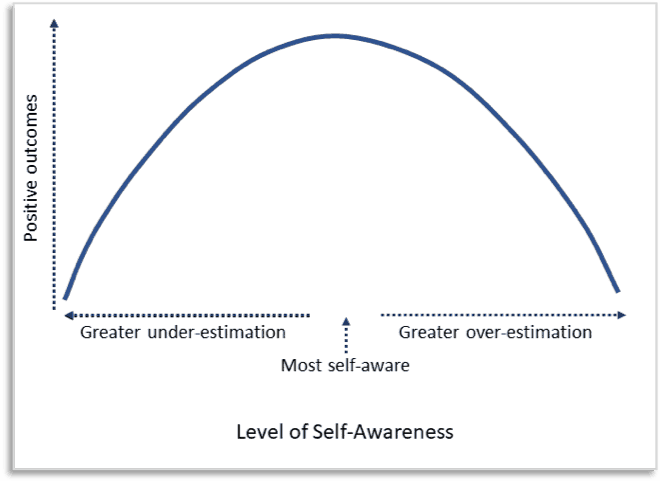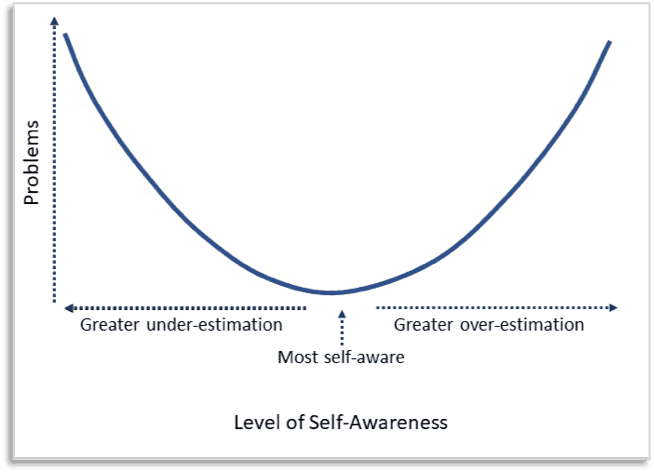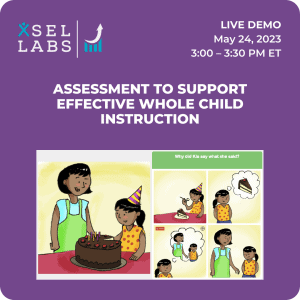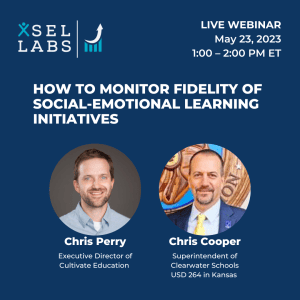Most people agree that it’s good to know yourself. In fact, “self-awareness” is one of the five core CASEL competencies and is reflected in state social and emotional learning standards that say what competencies student should know and be able to demonstrate at different ages. A key piece of self-awareness—the part we’ll focus on today—involves knowing one’s own strengths and weaknesses.
The Importance of Being Self-Aware
Why does self-awareness matter? Let’s consider a couple of scenarios.
Imagine a student studying for a test. Self-awareness looms large, in the form of understanding what material he has mastered and what still needs focused work. If the student believes he’s got it down when he doesn’t, the test won’t go so well; if he thinks he hasn’t mastered the material when in fact he has, he may feel unnecessarily anxious.
Self-awareness of social and emotional competencies matters too. Imagine a student who believes she is highly skilled at managing her emotions and actions, when in fact this is an area for growth. She might not be aware that her strong feelings and quick actions are part of why she finds herself in some sticky social situations. If she had a better handle on her emotion management skill level, she might approach others in a different, and more productive way.
It’s easy to imagine all kinds of ways self-awareness comes in handy.
The Difficulty of Assessing Self-Awareness
But there’s a problem. How the heck do you assess self-awareness? We kind of know self-awareness when we see it (or we think we do!). I bet you can think of someone you know who is especially self-aware. If that’s true, that means that somehow, you took the measure of that person’s level of self-awareness. You probably relied on intuition. But can we do better than a gut feeling in measuring how well someone understands their own strengths and weaknesses? Can we measure self-awareness in children?
Yes and yes.
How NOT to Assess Self-Awareness
Here’s how not to assess self-awareness: Give students a questionnaire asking them to rate their own competencies and call the scores you get “self-awareness.” Children’s responses to self-report questionnaires asking them to rate their own level of social and emotional competence assess children’s beliefs about their level of competence. Those beliefs might be on the mark; they might be wrong. They’re typically all over the map. Children’s responses to this self-report questionnaire tell us what they believe about their competencies, not how accurate those beliefs are.
(Important aside: my read is that self-report is currently the most common method of measuring self-awareness. It’s not quite right, by the strict definition of self-awareness, but it is what is commonly used.)
How to Assess Self-Awareness
So what’s a better way? Imagine you had a performance-based or direct measure of a student’s competence, and you had students rate their own level of competence. In theory, the difference between the student’s self-appraisal and their score on the “objective” assessment would yield a measure of self-awareness (where self-awareness is defined as awareness of one’s own strengths and weaknesses.)
Let’s take an example from math. Imagine a student completed a math test. Imagine then that the teacher asked the student to predict what percentage of items the student got right on the test. If the student predicted 60% and got 60% right, that reflects self-awareness of math competence. If she thought she got 100%, that would reflect an over-estimate. If she thought she got 50%, it would reflect an under-estimate.
The xSEL Labs team has collected data in which student completed a direct assessment of emotion regulation and a self-report questionnaire about their emotion regulation skills. We also have data in which students completed all of SELweb, providing an overall assessment of social and emotional competence, and a self-report measure of social competence. With both of these data sets, we also have other measures–teacher ratings of student social skills in both, and of problem behaviors, and academic competence in one.
These data contain the ingredients for measuring self-awareness: an “objective” measure of a competence and a student’s self-rating of his or her competence level. From these two scores, we can derive a measure of self-awareness by looking at how close students’ self-appraisals of competence are to their measured competence. Because we have teacher ratings of students, they also allow us to assess what the association is between self-awareness and important student outcomes. This gives us a way to evaluate the validity of our measure of self-awareness.
The Benefits of Self-Awareness
Here’s what we have learned so far: The more accurately students appraise their competencies, the more socially skilled and academically capable their teachers rate them and the less teachers report they engage in problem behaviors. The more children under- or over-estimate their competence, the lower teachers rate their social skills and academic competence and the higher teachers rate their problem behaviors.
More concretely, for positive outcomes, the relationship looks broadly like this:

For problem behaviors, the relationship looks broadly like this:

In sum, the more self-aware children are, the more they engage in socially skilled behavior and the less they engage in problem behaviors, and the more academically competent their teachers rate them.
The Bottom Line in Measuring Self-Awareness
Self-awareness is important, and it can be measured. That is why, starting in the fall of 2020, xSEL Labs will be adding a brief student self-awareness module to its suite of SELweb assessments. As always, our goal is for educators to have access to evidence-based assessment of student social and emotional competence—by adding an index of self-awareness, we’ll help extend the range of competencies assessed, and in so doing, deepen educators’ insights about their students.
There are other dimensions of self-awareness that we haven’t discussed here, such as knowing what you’re feeling. When we’ve figured out how to measure those competencies, we’ll be sure to let you know!



